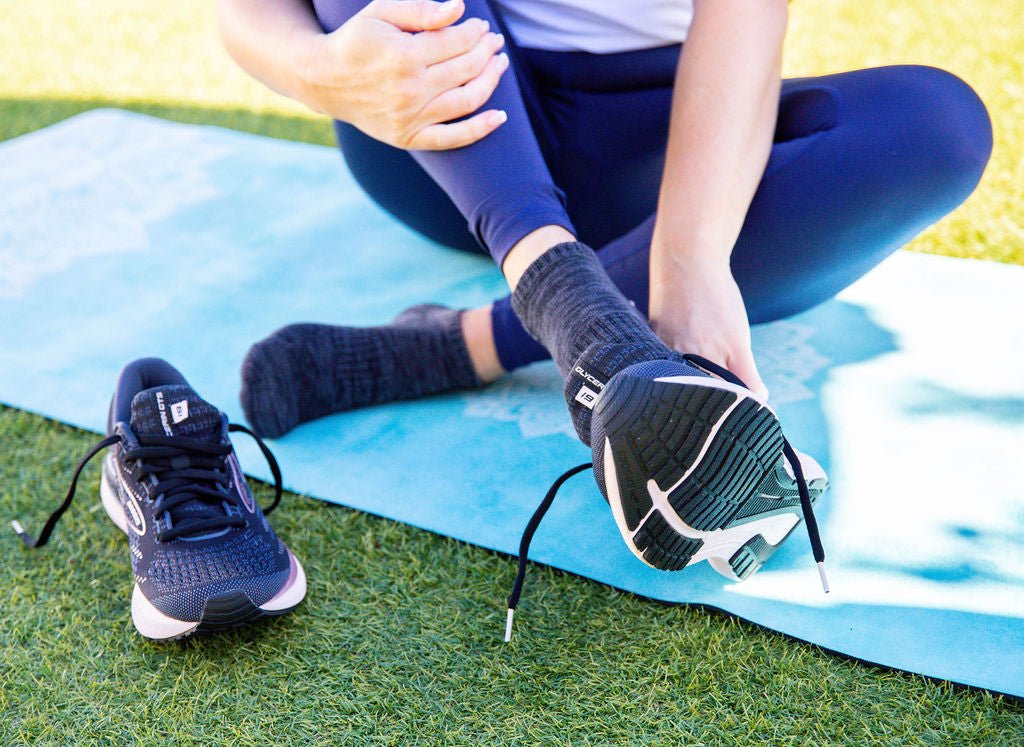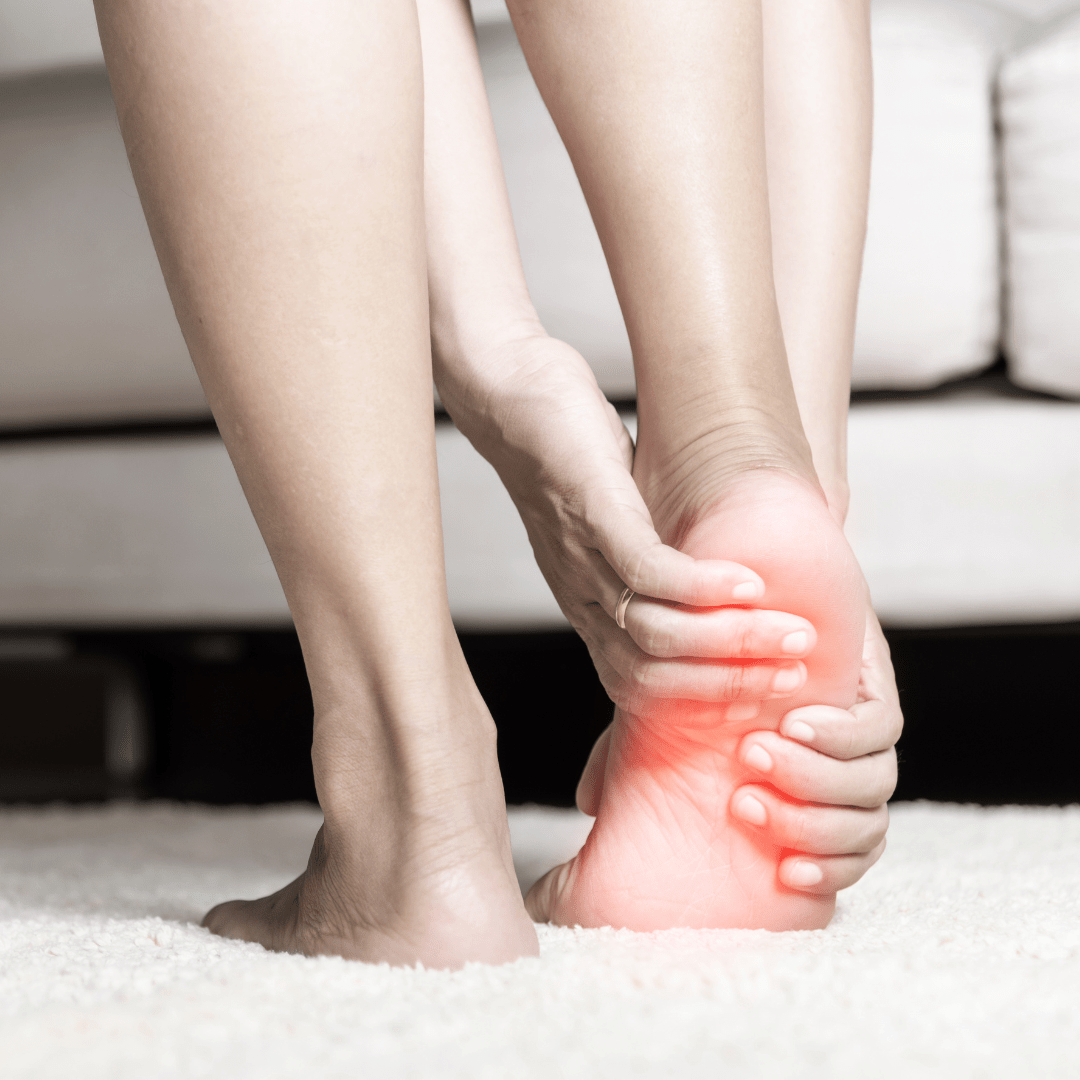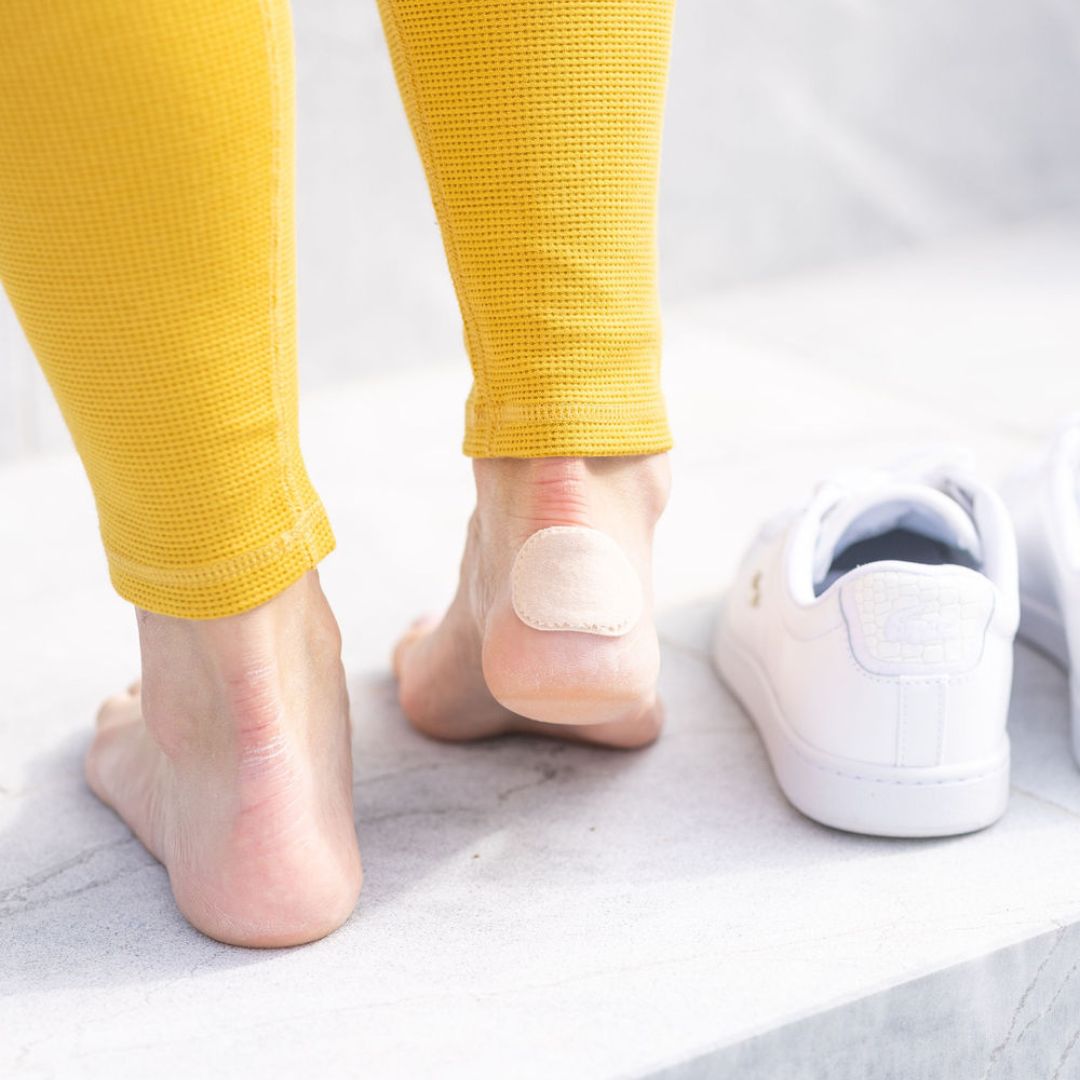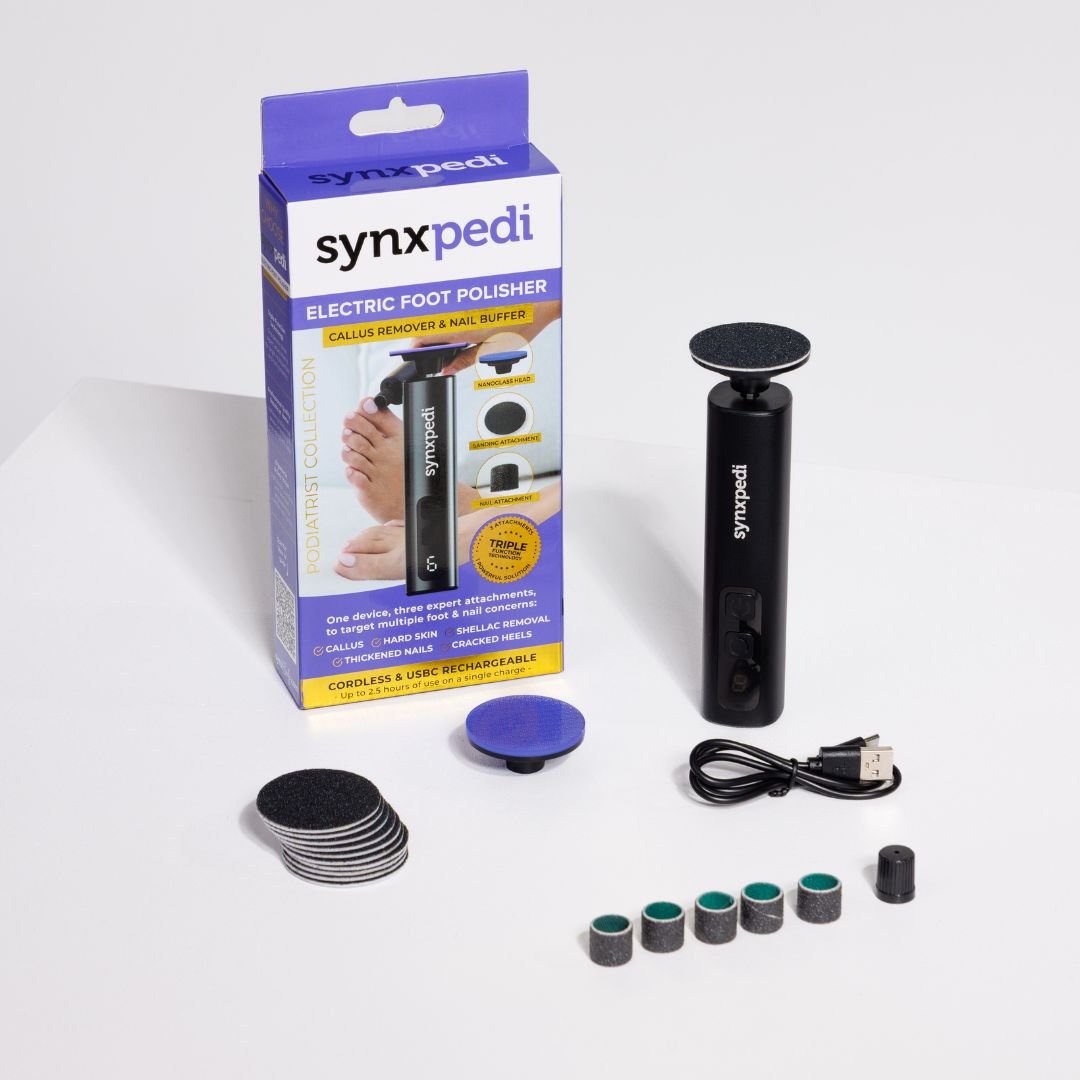Stabbing, burning, and pulsating pain is how many people describe their heel pain / plantar fasciitis symptoms.
1 in ten people will suffer from heel pain in their lifetime, so it is a condition that needs to be taken seriously.
If you’ve ever experienced heel pain, you will know just how brutal and debilitating it can be.
Often the first few steps will be the worst, and the pain can even linger on when putting your feet up at the end of the day.
It can stop you working and prevent you from exercising, resulting in weight gain and then worsening pain due to the extra weight. It’s a vicious cycle and one that few know how to manage properly.
However, there are many things you can do to help ease the symptoms of heel pain conditions.
How do you diagnose heel spurs and plantar fasciitis?
Heel pain can be fleeting and settle down quickly. It can also be chronic, like plantar fasciitis and take more time and effort to resolve.
Some people will have heel spurs, bony protrusions on the heel which are visible and can be confirmed on plain X-ray. Some will have heel spurs and no pain whilst others can have tears and thickening of their plantar fascia (the ligament under the foot) and this thickening and tears can be confirmed on ultrasound.
Prevention is key when it comes to avoiding heel pain.
The best ways to prevent heel pain developing are:
- Regular deep tissue massage and soft tissue release for tight muscles.
- Wearing supportive shoes and insoles to support and align your foot.
Tips to treat heel pain if it develops

Heel pain can be transient, as a result of overuse from an activity or that unsupportive pair of shoes that felt uncomfortable but you just wore them for one day. This type of heel pain comes on rapidly and with a little help it can disappear almost as quickly as it arrived, but the trick is not to ignore the early signs and treat the pain right away.
The first step is to check your footwear. Sometimes we will see the arches rolling in or out and often by simply supporting the foot and changing the distribution of pressure in the foot we can alleviate the pressure.
So, before you start any treatments, make sure you have supportive shoes. We recommend neutral running shoes and always encourage supportive shoes where ever possible. Ditch the thongs, as they can make an appearance again when it’s all healed. But if you’re serious about kicking the heel pain to the kerb, you need to be strict with your footwear.. Our top neutral runners are:
- Asics: Nimbus / Cumulus
- Brooks: Glycerin / Ghost
- Nike: Pegasus
- Hoka: (if you have a really stiff ankle, and reduced calf and big toe mobility).
Once you have your footwear sorted, you can try some other treatments to alleviate heel pain symptoms:
Here are our top 6 treatments to try:
- Dry needling
Dry needling is ideal for relieving tight spasmed muscles. Trigger points are tight bands or knots in the muscle which can shorten the muscle and make it weaker. By releasing the trigger points, the surrounding muscles and ligaments can get stronger therefore taking pressure off the smaller muscles surrounding the plantar fascia and heel area.
- Joint mobilisation
This can help to improve movement of the joints of your foot and ankle. By improving the mobility in the foot and ankle, the person can walk more freely, with less strain on the arch and heel area.
- Laser therapy
Cold laser is a painless therapy that reduces inflammation and stimulates cells to repair and heal traumatised tissue accelerating recovery.
- Orthotic therapy
We recommend trying off-the-shelf orthotics or more customised orthotics. Orthotics can help support the arch and stabilise the foot, by redistributing pressure and easing strain on the plantar fascia.
- Shockwave therapy
Extracorporeal shockwave therapy is an acoustic wave that carries high energy to skeletal tissues. The energy accelerates tissue regeneration and cell growth as well as reducing pain and swelling. Shockwave is especially effective on reducing bone swelling and heel spurs.
- Cortisone Injections
Cortisone injections help to reduce pain and inflammation and can be used effectively to relieve heel pain temporarily, as the cortisone may last anywhere from 6 weeks to 6 months. We always suggest this as a last resort for patients because it masks the problem, so be sure underlying issues have been rectified that may initially have caused the heel pain.
Top products that can help:
- Synxsole Everyday Insoles align the foot and reduce strain under the plantar fascia, redistributing pressure.
- Synxplus Foot and Ankle Compression Sleeves reduce pain and swelling and promote healing.
- Synxeaze Cream and Capsules may reduce pain, swelling and promote healing.
- Synxgeli Heel Cushions can be used for shoes that can’t fit insoles inside them. They help to cushion and relieve the heel during walking and standing.

Types of Heel Pain
There are many types of heel pain which can all present differently
- Plantar fasciitis - the plantar fascia is a band of connective tissue that runs along the sole from the heel, to the ball of the foot. With overuse the plantar fascia can be strained and pulled resulting in thickening and even tears or fissuring which can be painful and debilitating. Pain is typically felt along the arch of the foot but can also be felt deep insole the inside of the heel area.
- Heel spurs can be caused by an abnormal walking style, such as pronation (flat feet) or supination (high arches), which places extra strain on the plantar fascia. Chronic inflammation may develop and, over time, lead to a bony growth or spur. This spur can be inflamed and can be susceptible to fractures. Pain is typically felt under the heel area.
- Sever’s disease – one of the most common causes of heel pain in children is Sever’s disease, which is the result of stress placed on the growth plate of the heel bone and characterised by pain and inflammation and generally the child hobbles unable to put the foot down after running around and then sitting down and trying to get back up. . Sever’s pain is generally felt on squeezing the heel or applying pressure around the growth plate or outside of the heel.
- Achilles Tendinopathy – inflammation of the Achilles tendon can also cause posterior heel pain, felt at the back of the heel.
Get the Answers You Need: Your Top Questions, Our Expert Responses!






